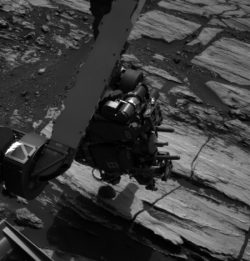The competition heats up: India preparing rover for 2018 Moon landing.
Isro’s Satellite Applications Centre Director, M. Annadurai, revealed the tentative launch schedule while speaking to the press at the Satish Dhawan Space Centre, Shar, Sriharikota on Wednesday. He said a Lander and a six-wheeled Rover were being prepped to go with the Chandrayaan-II mission. The chief scientist added that a launch is likely to take place in the first quarter of 2018. According to Dr P.V. Venkita Krishnan, the director of the Isro Propulsion Complex at Mahendragiri, engineers were currently testing soft-landing engines.
India’s launch of a record 104 satellites on a single rocket has pumped up the Indian press, as there were almost 20 stories on space and that launch in their press today, almost all favorable.
This article however is from the U.S., and takes a look at the ineffective American space policy that supposedly forbids American companies from launching on Indian rockets.
The U.S. Commercial Space Launch Agreement of 2005 prohibits the launch of commercial satellites on the Indian vehicle. The reasoning is that struggling U.S. commercial launch providers needed time to establish themselves in the market and would be wiped out by India’s PSLV, which is developed by the Indian Space Organization.
Since 2015, commercial satellite owners have successfully obtained waivers to the policy.
The article notes India’s competitive prices, as well as the overall state of the smallsat industry and its dependence on bigger rockets as secondary payloads to get into space. India’s rockets, funded and subsidized by the government but also built to be inexpensive so as to attract customers, is clearly positioned to effectively compete with SpaceX, who until now charged the least.
What will our Congress do? My preference would be for them to repeal this part of the 2005 law so that American satellite companies can fly on whoever they wish. That would increase competition but it would also likely invigorate the overall launch industry because it would increase the satellite customer base for those rockets and thus create more business for everyone.
Sadly, I suspect that Congress will instead demand that the waivers to the law cease, and will thus block the use if Indian satellites by American companies. The short-sightedness of our politicians never ceases to surprise me.






